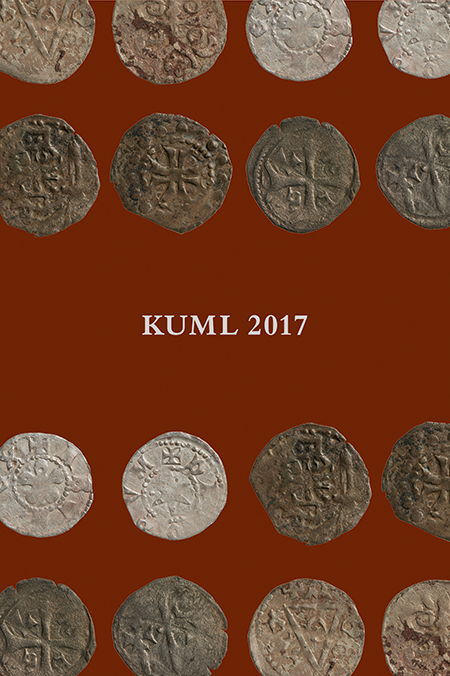Stednavne og arkæologi i Danmark
DOI:
https://doi.org/10.7146/kuml.v66i66.98356Keywords:
stednavne, arkæologi, DanmarkAbstract
Onamastics and archaeology in Denmark
There is a long research tradition of coupling place-name studies with archaeology. In the early 20th century, attention was focussed primarily on the reconstruction of past societies, including tribal migrations and the emergence of nation states. Several of these onamastic studies were characterised by an optimistic view of the value of the sources as evidence and the contemporaneity of the place names – optimism that cannot now be fully maintained, given today’s critical research approach and awareness of the broad dating frames for the place-name types (fig. 1).
Another significant area of conflict between place-name research and archaeology is settlement history. In the 1970s, a project with the title Landsbyens opståen – The origin of the village – was launched on the island of Funen. This challenged traditional settlement history, because the findings suggested that the historical villages – regardless of whether they bore names from the early or the late place-name layer – generally appeared to have been founded around the 11th-12th century. This led to discussions among place-name researchers about the potential usefulness of onamastic evidence in relation to settlement history: A discussion that was though, to a major extent, founded on differing views and understandings of the term continuity.
Since the village research project on Funen there has been a massive increase in available archaeological data, and the questions relating to settlement history have been taken up anew. In several instances, the archaeological record now suggests a more varied date for the fixing of the location of historical villages than was previously the case. On Funen, for example, this is now thought to have taken place in the 7th century AD (fig. 2). The question of area continuity in relation to the age of the name types can, given the increased imperical evidence of recent years, now be discussed on a more qualified foundation (fig. 3) and, as a consequence, a new model for name conversion can be presented here (fig. 4).
Over time, place names have seen frequent use in archaeology as site indicators – revealing the existence of lost settlements, snekke localities and strongholds and fortresses. The structure of society has also constituted a significant topic of interest in both archaeological and onamastic studies in recent decades. The emergence of a new category of metal-rich locality from the Late Iron Age in the late 1980s led to the formulation of an archaeological theory about central places. This theory fits surprisingly well with the results of some Swedish place-name studies, where repeated, uniform assemblages of characteristic place names – so-called central-place indicating name environments – are thought to be an onomastic expression of a similar phenomenon.
Recent studies based on Danish evidence have not led to the identification of uniform central-place indicating name environments in Denmark, even though areas with several possible central-place indicating names have been observed (fig. 5).
The landscape-archaeological approach of the 1990s has been of crucial importance for the important position occupied by place-name research in Danish archaeology today. The ongoing digitalisation of archives and records that is currently underway will mean that collating and combining these sources of information will become easier and more precise in the future. This, in turn, will hopefully lead to closer collaboration between the disciplines.
Lisbeth Eilersgaard Christensen
Odense
Downloads
Published
How to Cite
Issue
Section
License
Fra og med årgang 2022 er artikler udgivet i Kuml med en licens fra Creative Commons (CC BY-NC-SA 4.0).
Alle tidligere årgange af tidsskriftet er ikke udgivet med en licens fra Creative Commons.


